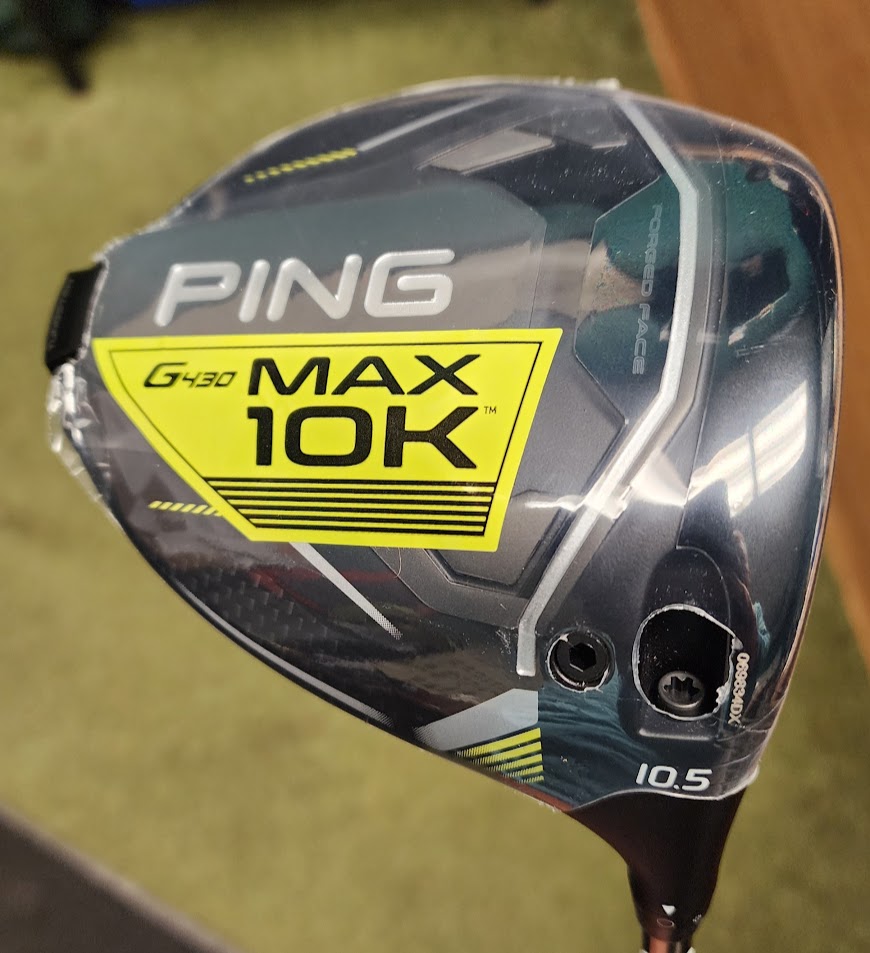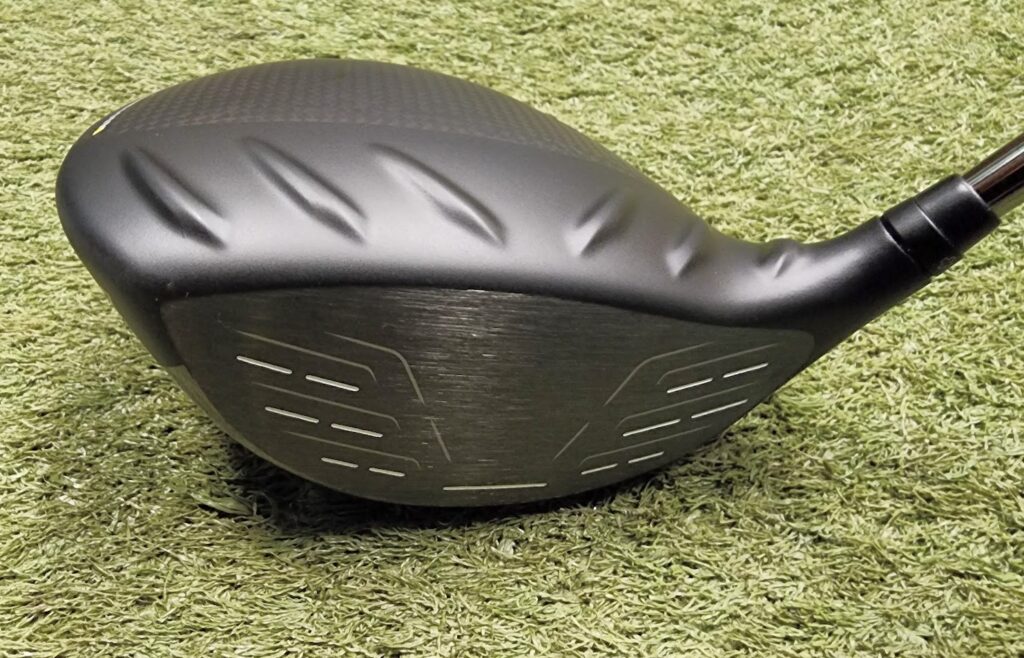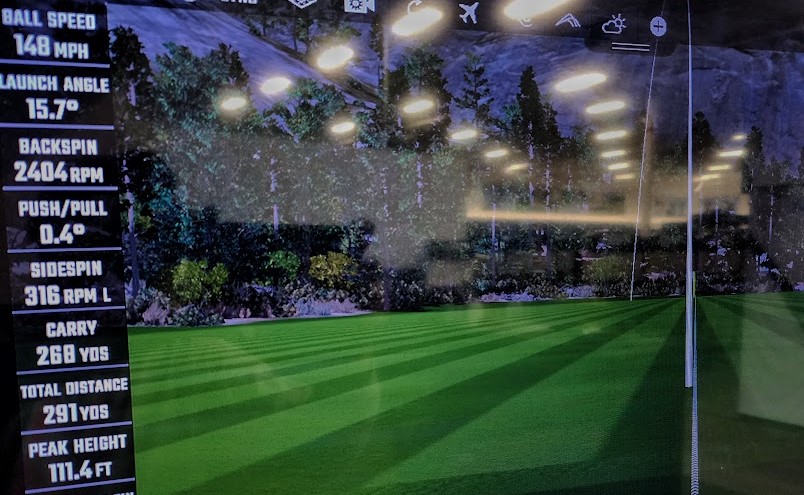
There’s a pretty solid roster of new drivers hitting the market this spring, but none has received more attention than Ping’s new G430 Max 10K. MOI (moment of inertia) of 10K is a legit milestone in golf club design, and it’s no surprise that PING is the company to first achieve it (TaylorMade also introduced a 10K driver in ’24). After speaking with Ping Design Engineering Manager – Travis Milleman, it didn’t take much convincing for this driver to enter the top of the must-test list.

At address, this driver head looks grande, we know this may turn off a few purists who prefer a compact driver head – if it isn’t an issue (wasn’t for me) read on. According to Milleman, the G430 Max 10K is the first time the company took a driver to the absolute limit of heel-to-toe and front-to-back dimensions. 460 is the volume limit, but there also is a size dimension limit, and the engineers at PING used every bit of that limit to achieve rarified MOI metrics. Milleman also points out, “we had to go a bit shallower with the face profile to accommodate the larger-sized clubhead, but this also allowed us to go a bit thinner as well.”

Technology
- 28g fixed backweight positions the center of gravity lower, deeper to create PING’s most accurate, forgiving and lowest spinning 460cc driver to date
- Carbonfly Wrap crown weighs 13g fully installed and saves 5g of weight to help lower the CG and increase MOI
- Thinner, shallower forged face optimized for more flexing, ball speed and distance
- Spinsistency, a variable face roll radius, optimizes spin, contributes to added distance
- Biggest head profile to date allows for record-setting MOI and inspires confidence to hit longer, straighter drives
- Sound is less muted, slightly louder than G430 MAX for powerful sensation
- Lightweight Trajectory Tuning 2.0 hosel allows adjustability of +- 1.5° to dial in ideal ball flight
- G430 HL (High Launch) build (18g backweight) available in all lofts for slower-swing-speed golfers


Weight savings are reallocated to a 28-gram rear weight to lower the CG, and raise MOI for increased ball speed. Turbulators sit atop an ultra-lightweight composite crown that wraps into the heel and toe sections of the skirt.

Our G430 Max 10k came in the stock Ping Tour 2.0 65 gram shaft, but we also tested with an aftermarket model, BGT’s new BRAVA Sierra Echo 54 gram F/4 (that features a profile similar to an Autoflex shaft, but at half the price).

Testing:
Initial thoughts from both indoor launch monitor testing and on the course, this driver head is an absolute cheat code on keeping the ball in the fairway, it wants to go straight. Secondly, if you’re interested in maxing out distance as well as hitting it down the middle, then definitely get fitted for the right shaft . . . more on that later.
Aesthetically as I mentioned earlier, it’s a big profile to look down at address, and with the carbon crown and turbulaors there’s a lot going on, but having tested several Ping drivers in the past, the look has been growing on me. As for the size, it only helped to instill confidence. Perhaps the biggest hurdle for me with Ping drivers is always the sound, usually a bit on the loud side and often clanky in pitch, but the G430 Max 10K is an improvement in that category. It won’t be mistaken for the iconic thwack of a Titleist or Taylormade driver, but center strikes are muted and give off an adequate feel, however anything on the perimeter of the sweetspot gets a bit higher pitched . . . so that’s one small blemish I was able to come up with on this driver.
Performance-wise, this driver was the straightest I’ve ever tested, and I’m not exactly known for having the tightest dispersion off the tee. Having established the correct loft sleeve setting for me was at -1 degree (9.5), the stock Ping 2.0 shaft provided ridiculously straight ball flight, just 6 yards off the centerline on average – but the ball speed and distance #’s were a bit below what I typically see from my gamer (that is equipped with an aftermarket BGT Brava shaft). Luckily, Breakthrough Golf Technology had just sent over their new BRAVA Sierra Echo model in F/4 (stiff flex) in 54 grams, so this would make for a fair comparison with what’s in my bag.
Here’s a brief description on Breakthrough Golf Technologies – BRAVA Sierra Echo:
The Sierra Echo delivers the distance and consistency to perform shot after shot regardless of swing speed or driver model (similar in profile to the Autoflex brand). It was designed for maximum ball speed and smash factor because it delivers more center strikes and a better face angle. According to BGT, “The magic comes from a shaft that feels very light yet still delivers incredible power. You’ll generate more clubhead speed, better velocity, and launch trajectory. In head-to-head testing, the Brava outperformed Autoflex, by an impressive 10 yards.”

Launching towering baby draws and high straight bombs were the norm with this clubhead/shaft combo, ball speeds weren’t crazy fast (anything around 150 is good for me), but maximum efficiency turned this fairway finder into a tee box missile launcher. Dispersion was still tight at a 9-yard average off the centerline, This particular swing (above) had the best performance metrics I’ve ever had in any driver test, and the next best 10 drives were all similar. I have the rare problem of not producing enough backspin, so anytime I can launch it in the 14-16-degree range with 2200-2400 spin with a slight draw, I’m ecstatic (even fades were flying 260 yards/with a total distance of 275 yards). On the golf course, the launch monitor data showed itself to be authentic, this combo of shaft and clubhead produced unicorn type of performance.
As it turns out, BGT has opened up a portal of performance for me to maximize each driver I test with their BRAVA line. . . . find that shaft that brings out your best dispersion and distance. Figuring out the correct brand and model driver head becomes much easier at that point. Presently, the G430 Max 10K (and BGT Sierra Echo shaft) has supplanted my TSR3 in the bag, only time will tell if the honeymoon can last.
Summary:
We have several driver tests on tap for this year, and those coming up will have a tough chore to compete with Ping’s G430 Max 10K. Honestly, I didn’t think another driver would have a shot to knock my gamer out of the bag this year, but the fact that you can swing free and fast with confidence and know you’re likely to be hitting your next from the shortgrass, makes it a tough one to beat in 2024.
Tests like this validate the need to get fit for the right shaft, or else our impressions and data with this driver wouldn’t yield a complete and proper assessment. BGT is an aftermarket shaft that isn’t part of Ping’s offerings, so in some cases, an off-the-rack retailer may not yield your best results (places like TrueSpec and Club Champion specialize in these type of fittings where several different combinations of head/shaft can be tested on site). MSRP $599.
https://ping.com/en-us/



